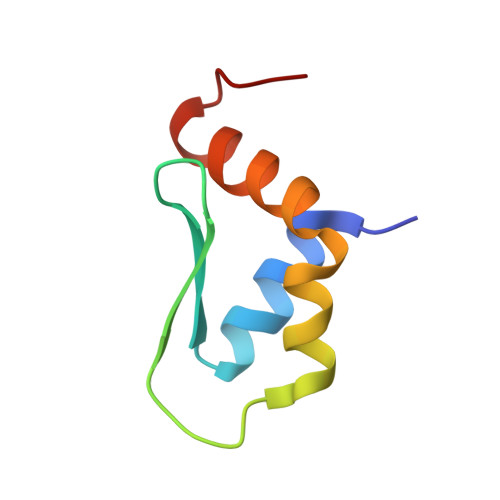Structure-based redesign of docking domain interactions modulates the product spectrum of a rhabdopeptide-synthesizing NRPS.
Hacker, C., Cai, X., Kegler, C., Zhao, L., Weickhmann, A.K., Wurm, J.P., Bode, H.B., Wohnert, J.(2018) Nat Commun 9: 4366-4366
- PubMed: 30341296
- DOI: https://doi.org/10.1038/s41467-018-06712-1
- Primary Citation of Related Structures:
6EWS, 6EWT, 6EWU, 6EWV - PubMed Abstract:
Several peptides in clinical use are derived from non-ribosomal peptide synthetases (NRPS). In these systems multiple NRPS subunits interact with each other in a specific linear order mediated by specific docking domains (DDs), whose structures are not known yet, to synthesize well-defined peptide products. In contrast to classical NRPSs, single-module NRPS subunits responsible for the generation of rhabdopeptide/xenortide-like peptides (RXPs) can act in different order depending on subunit stoichiometry thereby producing peptide libraries. To define the basis for their unusual interaction patterns, we determine the structures of all N-terminal DDs ( N DDs) as well as of an N DD- C DD complex and characterize all putative DD interactions thermodynamically for such a system. Key amino acid residues for DD interactions are identified that upon their exchange change the DD affinity and result in predictable changes in peptide production. Recognition rules for DD interactions are identified that also operate in other megasynthase complexes.
Organizational Affiliation:
Institute of Molecular Biosciences and Center for Biomolecular Magnetic Resonance (BMRZ), Goethe University Frankfurt, 60438, Frankfurt am Main, Germany.














